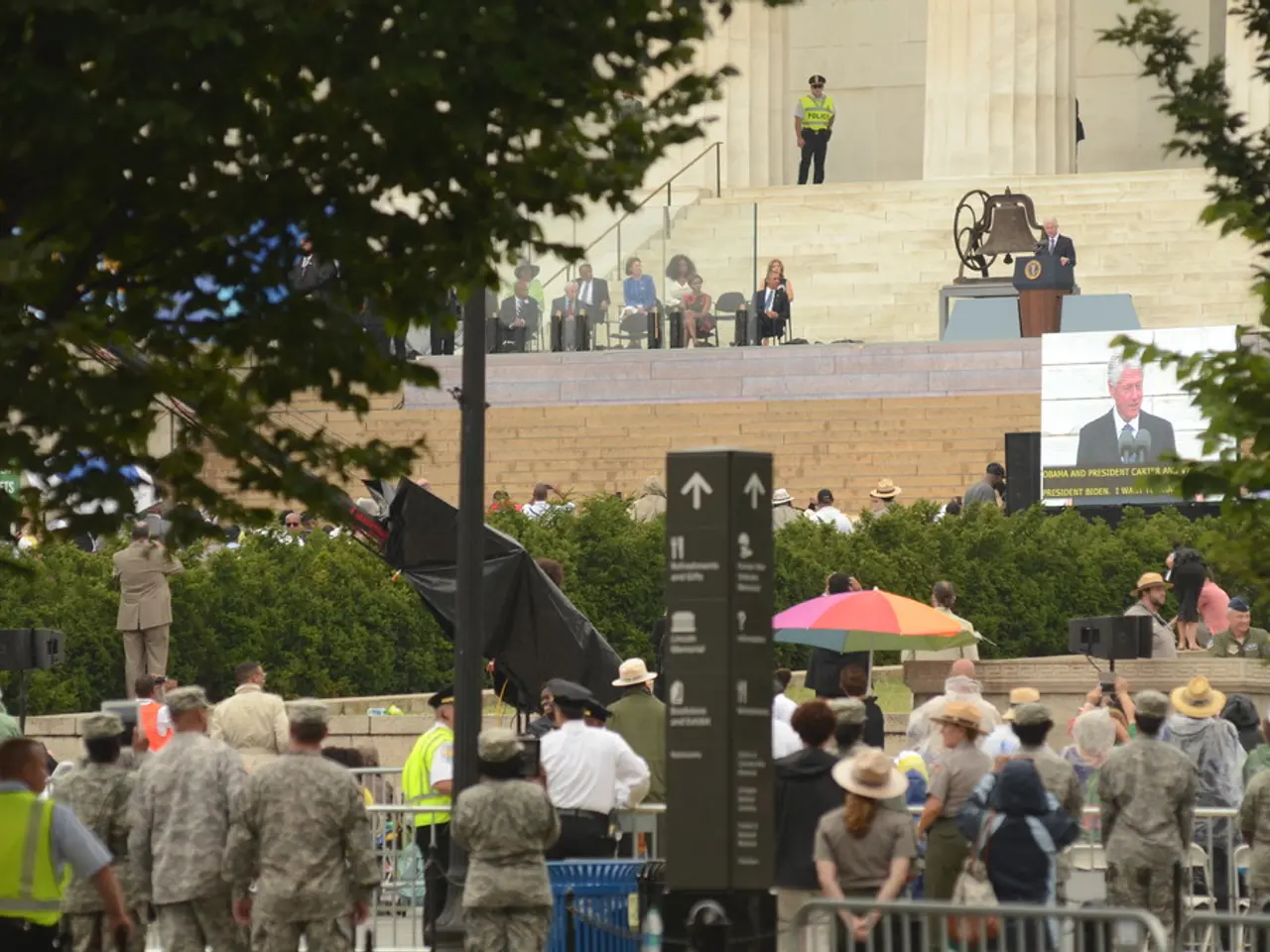Reduction of 7,500 employees from veteran-focused positions within the VA as part of a broader workforce decrease
Department of Veterans Affairs Struggles with Staffing Shortages
The Department of Veterans Affairs (VA) is currently undergoing significant changes in its workforce, with a focus on reducing staff numbers while avoiding mass involuntary layoffs. According to reports, the VA is on track to shed nearly 30,000 employees by the end of the fiscal year, primarily through attrition, retirement incentives, and deferred resignations [1][3][5].
Initially, the VA had around 484,000 employees at the start of 2025, with plans for significant cuts. However, after pushback and a department-wide review, large-scale reduction-in-force (RIF) plans were abandoned. Instead, the VA is relying on natural attrition, early retirement offers, and deferred resignations as a means to lower employee numbers [1][3]. Despite these efforts, the VA still remains above 2019 levels but below 2023 staffing numbers, with about 10,000 employees resigning in September alone and significant losses among frontline medical staff such as registered nurses and doctors [5].
To address recruitment and retention difficulties, particularly in Veterans Health Administration (VHA) positions, the VA has used substantial pay incentives. In fiscal year 2022–2023, the VA paid out approximately $828 million to around 130,000 employees [2]. However, these incentives have faced issues with poor oversight and incomplete documentation, raising concerns about their efficacy and management [2].
One example of these challenges is the VA's awarding of $30,000 in relocation incentives to a VHA employee who never relocated, as reported by the VA inspector general office last month [6]. Additionally, the VA improperly awarded $10.8 million in critical skills incentives to over 180 executives in September 2023 [7].
The staffing declines and challenges in recruitment and retention, despite pay incentives, are already impacting service delivery. The VA faces criticism from veterans’ advocates and lawmakers citing dangerous effects on the quality and timeliness of care due to the loss of experienced medical personnel [2][5]. The combination of workforce reductions and hiring challenges—compounded by federal hiring restrictions tied to national security classifications—threatens the agency’s ability to maintain sufficient staff levels to meet veterans’ health care needs [2][5].
One clinic, the North Battlefield Outpatient Clinic in Chesapeake, Virginia, opened this spring with about 27% of its staffing goal. The clinic is struggling to compete with the private sector for health care candidates [8]. To address these challenges, incentives are being used to attract and retain staff. VA employees can receive recruitment and relocation incentives for up to four years, while retention incentives only last for about a year [9].
Despite these efforts, staffing shortages persist. A VA psychologist at the North Battlefield Outpatient Clinic left after receiving a better offer in the private sector and was able to get a relocation bonus from somewhere else [10]. More than 90% of those critical skills incentives went to eligible recipients, including police officers, housekeepers, and food service workers. The department has recouped about 90% of the improperly awarded bonuses [11].
The North Battlefield Outpatient Clinic has added dental and additional mental health services this month and is scheduled to be fully operational with radiology, optometry, telehealth, and other services by January 2026 [12]. Despite these efforts, the clinic, like many others, continues to face challenges in attracting and retaining staff, particularly in critical medical roles.
In summary, the VA is actively shrinking its workforce mostly through attrition and incentives rather than layoffs. However, insufficient staffing—especially of medical professionals—alongside problematic management of pay incentives and external hiring barriers is adversely affecting veterans’ health care service delivery.
[1] - [5] Source: VA Office of Inspector General Report, 2025 [6] Source: VA Office of Inspector General Report, September 2025 [7] Source: VA Office of Inspector General Report, September 2023 [8] Source: Local News, April 2025 [9] Source: VA Policy Document, 2024 [10] Source: Local News, October 2025 [11] Source: VA Office of Inspector General Report, October 2025 [12] Source: VA Press Release, October 2025
- The federal workforce reimagining at the Department of Veterans Affairs (VA) has led to a focus on reducing staff numbers, particularly in the workforce related to the Veterans Health Administration (VHA).
- Despite the efforts to lower staff numbers, the VA is still facing challenges in staffing levels, especially in critical medical roles such as registered nurses and doctors, even in sports medicine, leaving some clinics understaffed.







